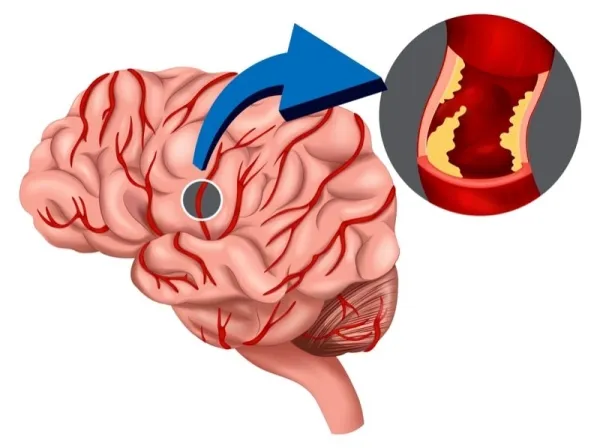Neurosurgery Coding Alert
Know Specifics Before Coding These 3 Vertebral Surgeries
Here’s why you must be able to ID excision, corpectomy, osteotomy. When a surgeon performs a vertebral excision, corpectomy, or osteotomy, coders often find themselves with their back to the wall. That’s due to the unique challenges this trio of procedures presents. First, obviously, you’ll need to identify whether the procedure is an excision, corpectomy, or osteotomy. Only after drilling down into the notes will you find the other info you’ll need to code correctly, as there are several types of excision, corpectomy, and osteotomy. We spoke to a couple of experts to see how they keep all of this straight. Check out this advice on coding excisions, corpectomies, and osteotomies. Excisions = Add-on Codes The first surgery we’ll discuss, vertebral excision, involves “the shaving or removal of a growth from the surface of the vertebra — typically done to the vertebral body,” explains Deni Adams, CPC, CPB, CPPM, CEMC, CCA, director of coding and implementation services at Kaleidoscope Health Systems. Most times, you’ll code for two types of excisions: posterior and anterior. Code posterior excisions with codes from the 22100 (Partial excision of posterior vertebral component (eg, spinous process, lamina or facet) for intrinsic bony lesion, single vertebral segment; cervical) through +22103 (… each additional segment (List separately in addition to code for primary procedure)) code set. Code anterior excisions with codes from the 22110 (Partial excision of vertebral body, for intrinsic bony lesion, without decompression of spinal cord or nerve root(s), single vertebral segment; cervical) through +22116 (… each additional vertebral segment (List separately in addition to code for primary procedure)) code set. Note that both of these code pairs are for excision of an intrinsic bony lesion, and are not for degenerative arthritic changes like osteophytes. Report Osteotomy With These Codes When your surgeon performs an osteotomy, they “remove a section [wedge] for preparation of realignment of the spine in spinal deformities,” Adams explains The purpose of an osteotomy is to remove a wedge of disc and adjacent bone (in anterior osteotomy) or a wedge of a facet joint (in posterior osteotomy) to allow for correction of a deformity. The joints, which are usually rigid from arthrosis, are excised by osteotomy to restore joint movement and thereby allow for deformity correction. Because the nature of osteotomy is removal of disc and bone (when performed anteriorly) or ligament and bone (when performed posteriorly), one would not concurrently report a decompression code at the same interspace level. Remember this: “Osteotomy is an incision into bone,” says Lynn M. Anderanin, CPC,CPB,CPMA,CPPM, CPC-I,COSC, senior coding educator at Healthcare Information Services, LLC in Park Ridge, Illinois. There are four types of osteotomies that you’ll probably code for: pedicle/vertebral body subtractions, posterior column osteotomies, kyphectomies, and anterior body subtractions. Code pedicle/vertebral body subtractions with codes from the 22206 (Osteotomy of spine, posterior or posterolateral approach, 3 columns, 1 vertebral segment (eg, pedicle/ vertebral body subtraction); thoracic) through +22208 (… each additional vertebral segment (List separately in addition to code for primary procedure)) code set. Code posterior column osteotomies with codes from the 22210 (Osteotomy of spine, posterior or posterolateral approach, 1 vertebral segment; cervical) through +22216 (Osteotomy of spine, posterior or posterolateral approach, 1 vertebral segment; each additional vertebral segment (List separately in addition to primary procedure)) code set. Code kyphectomies with codes 22818 (Kyphectomy, circumferential exposure of spine and resection of vertebral segment(s) (including body and posterior elements); single or 2 segments) and 22819 (… 3 or more segments). Code anterior body subtractions with codes from the 22220 (Osteotomy of spine, including discectomy, anterior approach, single vertebral segment; cervical) through +22226 (… each additional vertebral segment (List separately in addition to code for primary procedure)) code set. Corpectomy Involves Large Vertebral Body Removal When your surgeon performs corpectomy, they “remove a large portion — or all — of the vertebral body for decompression and/or lesion removal of the vertebral body,” explains Adams. There are two types of corpectomies you’ll code most often: anterior/anterolateral and lateral extracavitary. Code anterior/anterolateral corpectomies with codes from the 63081 (Vertebral corpectomy (vertebral body resection), partial or complete, anterior approach with decompression of spinal cord and/or nerve root(s); cervical, single segment) through +63091 (Vertebral corpectomy (vertebral body resection), partial or complete, transperitoneal or retroperitoneal approach with decompression of spinal cord, cauda equina or nerve root(s), lower thoracic, lumbar, or sacral; each additional segment (List separately in addition to code for primary procedure)) code set. Code lateral extracavitary corpectomies with codes from the 63101 (Vertebral corpectomy (vertebral body resection), partial or complete, lateral extracavitary approach with decompression of spinal cord and/or nerve root(s) (eg, for tumor or retropulsed bone fragments); thoracic, single segment) through +63103 (… thoracic or lumbar, each additional segment (List separately in addition to code for primary procedure)) code set. Anderanin instructs coders to follow this advice on corpectomy repair type: “For vertebral corpectomy, the term partial is used to describe removal of a substantial portion of the body of the vertebra. In the cervical spine, the amount of bone removed is defined as at least one-half of the vertebral body. In the thoracic and lumbar spine, the amount of bone removed is defined as at least one-third of the vertebral body.”

Related Articles
Neurosurgery Coding Alert
- Surgical Coding:
Less-Invasive Stereotactic Surgery Requires Special Coding Skills
You’ll choose 1 of 2 codes when surgeon operates on intracranial lesions. When your neurosurgeon [...] - Clip and Save:
Rely on These Terms for Intracranial Lesion Surgeries
Do you know the 3 meninges? During her recent presentation at HEALTHCON Regional Denver 2022 [...] - Surgical Coding:
Know Specifics Before Coding These 3 Vertebral Surgeries
Here’s why you must be able to ID excision, corpectomy, osteotomy. When a surgeon performs [...] - You Be the Coder:
Co-Surgeons and an Accident Victim
Question: A 35-year-old mountain biker lost control of their bike during a competition, falling down an [...] - Reader Questions:
Follow Through to Components for Skull Base Lesion Removal
Question: During surgery of the skull base to remove lesions, our surgeon performs a LeFort I [...] - Reader Questions:
Px Status Drives Code Choice on E/M-Myelography Claim
Question: Encounter notes indicate that after an office evaluation and management (E/M) service that included moderate [...] - Reader Questions:
Look at RVUs Before Ordering Chemodenervations
Question: Encounter notes indicate that the provider performed chemodenervation of three muscles in the patient’s right [...] - Reader Questions:
Consider Companion Code When Reporting This Syndrome
Question: Notes indicate that the provider performed a level-three office evaluation and management (E/M) service for [...] - Reader Questions:
Answer Trauma Question, Then Code Brain Herniation
Question: Encounter notes indicate that the patient suffered a herniated brain stem. What is the ICD-10 [...] - Reader Questions:
Use This Code for Nonspecific Lumbago Dx
Question: Encounter notes indicate that the provider treated a patient with “lumbago NOS.” I’m having trouble [...]




